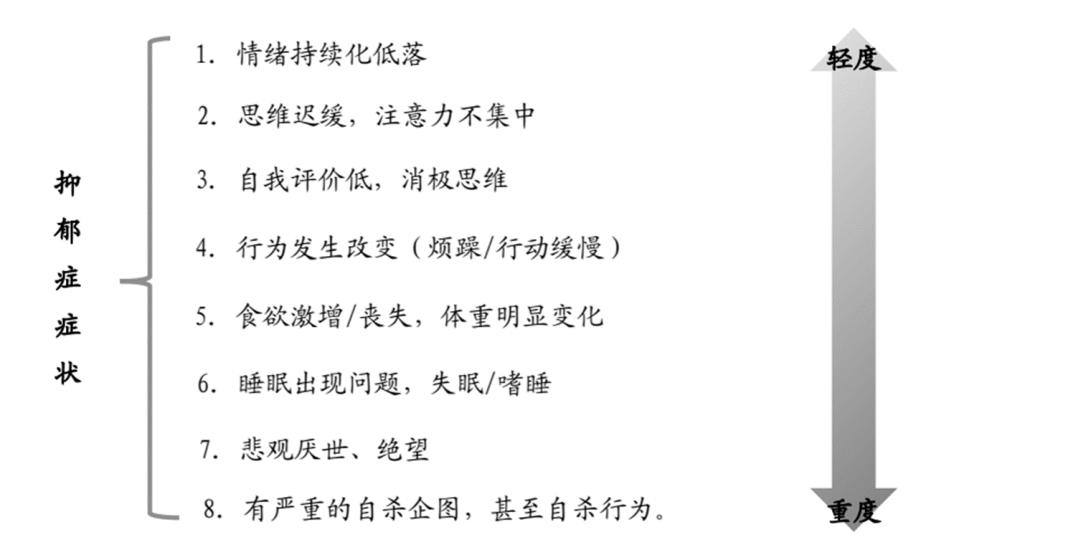Antidepressant Market
In China, there are nearly 100 million people suffering from depression, accounting for 7.3% of the total population. Among them, the number of patients with depressive disorders is about 55 million, with a prevalence of 4.2%; the number of patients with anxiety disorders is about 41 million, with a prevalence of 3.1%. Although the current consultation rate for depression in China is low (less than 10% of patients actually receive effective antidepressant treatment), data shows that the sales of antidepressants in domestic sample hospitals have grown rapidly in recent years. Before 2014, the year-on-year growth rate remained at around 20%, and although the growth rate has slowed down since then, the year-on-year growth still remains above 10%. In 2016, the sales of antidepressants in sample hospitals reached as high as 62.6 billion yuan.
Definition of Depression
Depression, also known as major depressive disorder, is characterized by significant and prolonged feelings of sadness as the main clinical feature, and is a common mental illness. In the Western world, it is referred to as “the blues.” The causes of depression are multiple factors from biological, psychological, and social environments, usually associated with gender, genetic factors, social environmental influences, early traumatic experiences, illnesses, and medications.
Common Symptoms of Depression
Current Situation of Depression
Globally, depression is listed as one of the leading contributors to non-fatal health loss, exhibiting “four highs and two lows” characteristics:
1) High incidence: According to the World Health Organization data, the global incidence of depression is about 11%, with approximately 340 million people suffering from depression worldwide. Depression has now become the fourth largest disease in the world.
2) High recurrence: According to the “Chinese Guidelines for the Prevention and Treatment of Depressive Disorders,” the recurrence rate of depression patients is as high as 80%.
3) High burden: The World Health Organization predicts that by 2020, depression will rise to the second place in the global disease burden.
4) High suicide: Depression is closely related to suicide as a risk factor. In China, nearly 7 out of 100,000 individuals commit suicide, and 40% of suicide victims have depression at the time of suicide. The lifetime occurrence rate of self-harm behaviors in severely depressed patients is as high as 86.8%.
5) Low recognition: Currently, the recognition rate of depression in municipal-level and above hospitals nationwide is less than 20%, and doctors in comprehensive hospitals have a low recognition rate for depression, leading to frequent misdiagnosis of patients.
6) Low treatment seeking: Epidemiological survey data indicates that only less than 10% of depressed patients receive professional help and treatment.
Treatments for Depression
There are three main methods for treating depression: psychological therapy, physical therapy, and drug therapy, with drug therapy being the primary treatment for depression.
Venlafaxine
Venlafaxine, as a new generation of antidepressant, exerts its antidepressant effects by inhibiting the reuptake of serotonin and norepinephrine and is suitable for depression accompanied by anxiety disorders and generalized anxiety disorder. Venlafaxine was developed by Wyeth (later acquired by Pfizer), approved by the FDA in December 1993, and first launched in the United States in April 1994 under the brand name “Effexor.” It once became the world’s top-selling antidepressant (sales reached $3.5 billion in 2005), but despite a rapid decline in global sales after the patent expiration in 2008, Venlafaxine remains as an excellent antidepressant.
Duloxetine
Duloxetine, developed by Eli Lilly, was first launched in the United States in August 2004 under the brand name “Cymbalta,” approved for the treatment of major depressive disorder. It subsequently underwent a series of indications expansions, including the treatment of painful diabetic peripheral neuropathy, effective treatment of moderate to severe stress urinary incontinence in women, fibromyalgia, and chronic musculoskeletal pain.
The changes in the competitive landscape after its entry into the domestic market can be seen:
(1) Although the market share of the originator drug has been squeezed, it still remains dominant.
Before the expiration of the patent in 2013, the originator drug held over 80% of the market share for a long time. In recent years, although the market share has been significantly reduced, it still dominates the market with few competitors, and its position is difficult to shake in the short term;
(2) Rise of domestic pharmaceutical companies, with the proportion of generic drugs increasing year by year.
With the entry of early generic products approved in 2006 by Chinese-Western Pharmaceutical and those approved in 2014 by Enhua Pharmaceutical, the market share of generic drugs has rapidly expanded. In addition, Huahai Pharmaceutical and Chongqing Sanxie successfully entered the market in 2017. We believe that the rise of domestic pharmaceutical companies will reshape the competitive landscape of Duloxetine in the domestic market, with generic drugs expected to further seize the market share of the originator drug.
Mirtazapine
Mirtazapine is the first noradrenergic and specific serotonergic antidepressant (NaSSA), which on the one hand blocks central presynaptic alpha2-autoreceptors located on noradrenergic nerve endings and alpha2-heteroreceptors that have inhibitory effects on serotonergic nerve endings, thereby increasing the release of norepinephrine and serotonin, and also by stimulating excitatory alpha1-adrenergic receptors on serotonin cell bodies increasing the activity of serotonin neurons, especially serotonin1-mediated neural transmissions. On the other hand, it selectively blocks 5-HT2 and 5-HT3 receptors.
Application of Airflow Mill in Antidepressant Production
Applications of airflow mill in the production of antidepressants mainly include:
Mirtazapine after grinding
Duloxetine before grinding
Duloxetine after grinding


